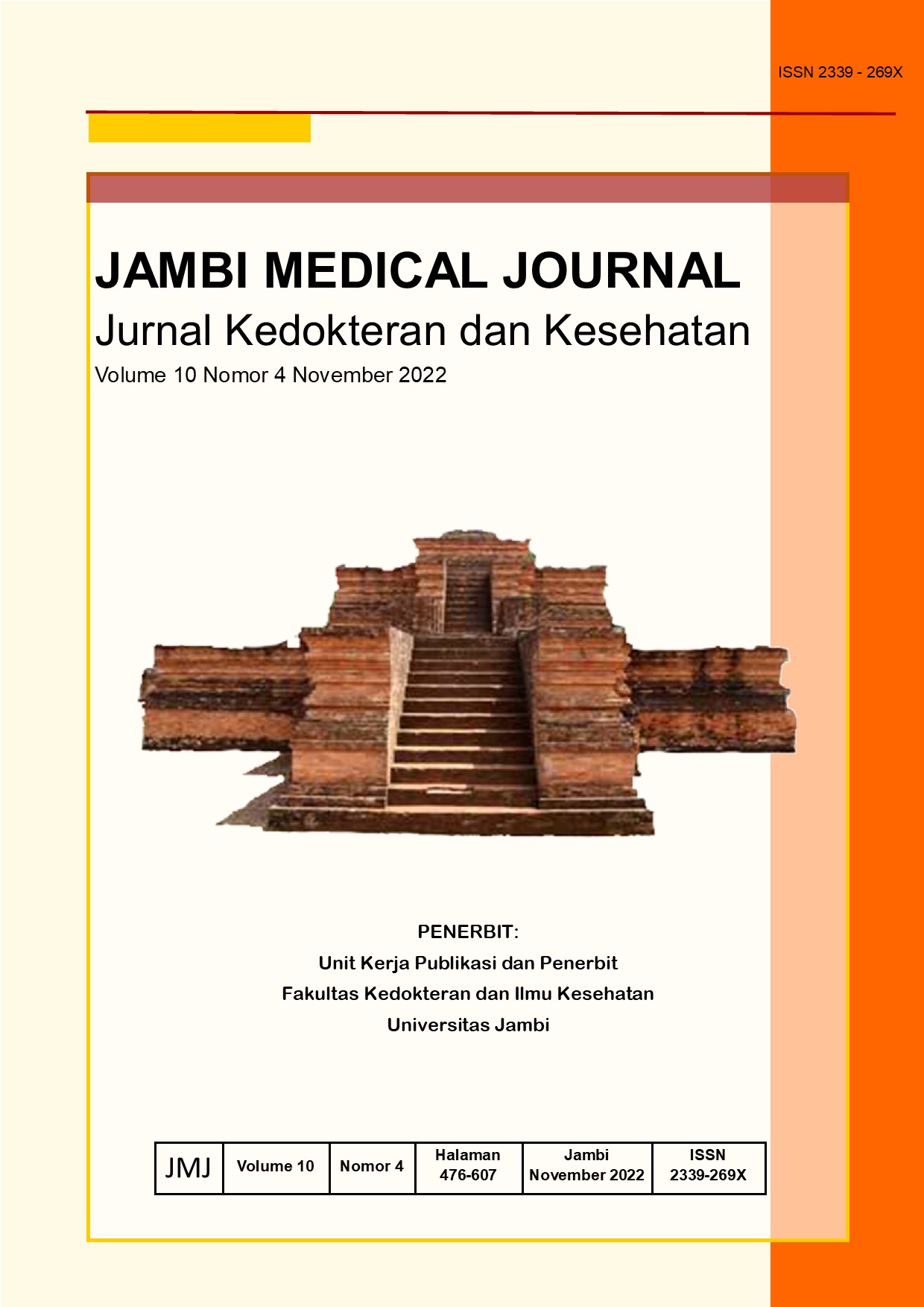ADIKSI INTERNET: STUDI PADA REMAJA SMA KOTA JAMBI
DOI:
https://doi.org/10.22437/jmj.v10i4.21476Abstract
Background: Patients with internet addiction are known to experience changes in brain structure with manifestations of impaired executive function planning-reasoning and increase the risk of impulsivity. Adolescents are considered more susceptible to internet addiction than adults. Physical-social distancing during the Covid-19 pandemic increases the risk of internet exposure among adolescents. Research in 2021 on 2,932 adolescents from 33 provinces in Indonesia found 19.3% of internet addiction incidences in adolescents.
Objective: This study aims to determine the incidence of internet addiction in high school students in Jambi City.
Methods: A cross sectional study with multistage sampling technique on an affordable population of all Jambi City Senior High School students by using instrument Internet Addiction Diagnostic Questionnaire.
Results: Among 529 high school students, 123 students (23.2%) experienced internet addiction (38.2% male, 61.8% female). The increase in internet access during the Covid-19 pandemic was agreed by 46.5% students with the majority use of the internet were 6-10 hours (52.2%). The duration of internet use during the pandemic and the main motive for internet use had a significant relationship with internet addiction (p = 0.000; 0.025). Internet use with a duration of 11 hours/day in adolescents has a 6-fold risk of internet addiction (OR = 6,539).
Conclusions: Internet addiction among adolescents in Jambi City is higher than the national data. Collaboration between the government, schools, communities and health service providers is needed to find solutions for the prevention and adequate management of internet addiction in adolescents, especially in the Jambi City.
Keyword: internet addiction, adolescents, Jambi city











